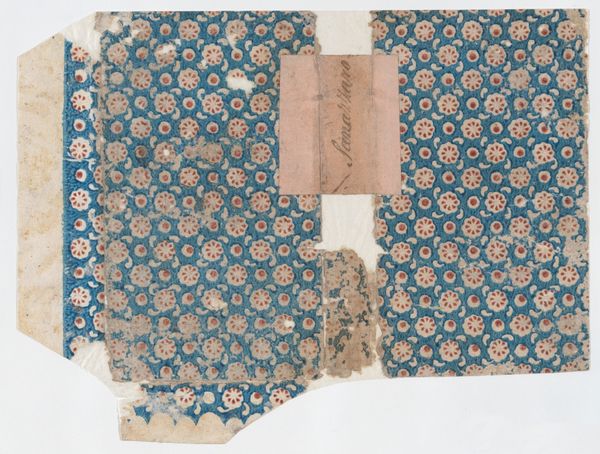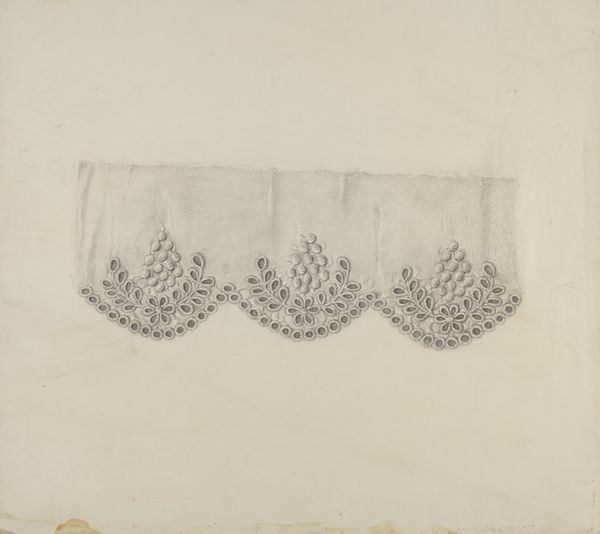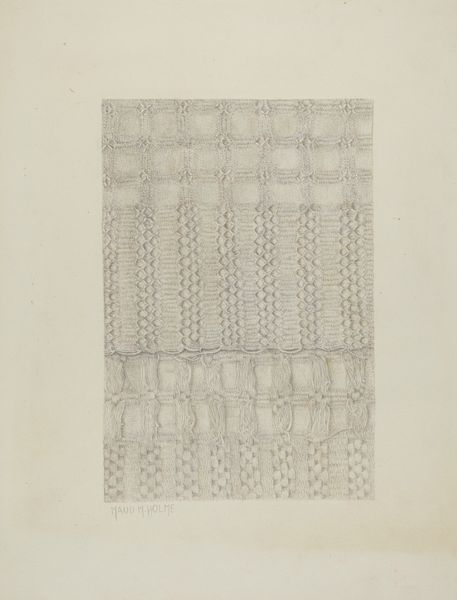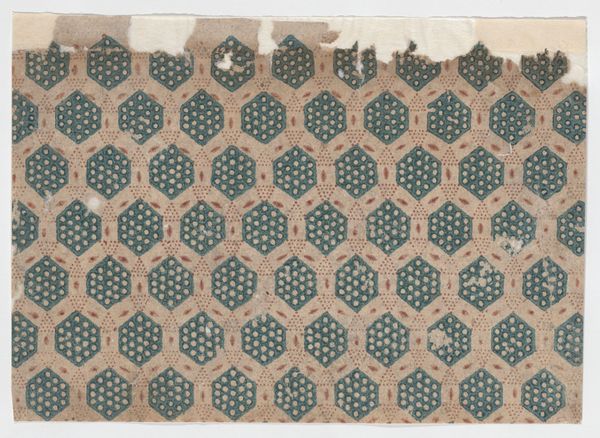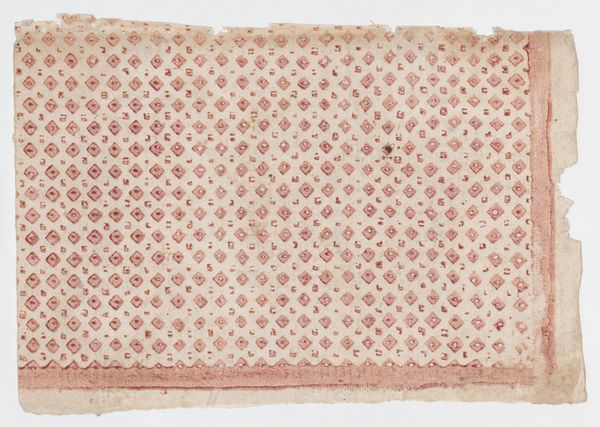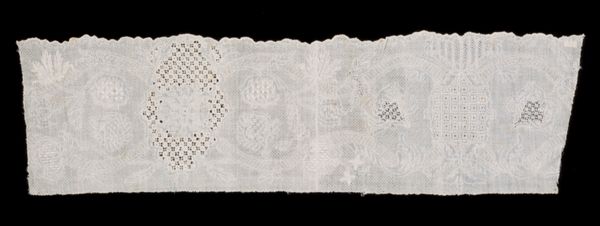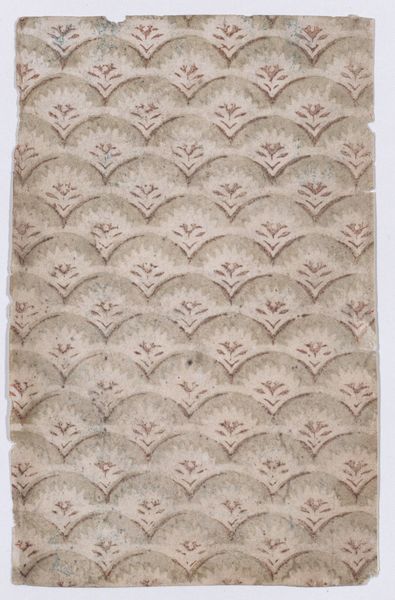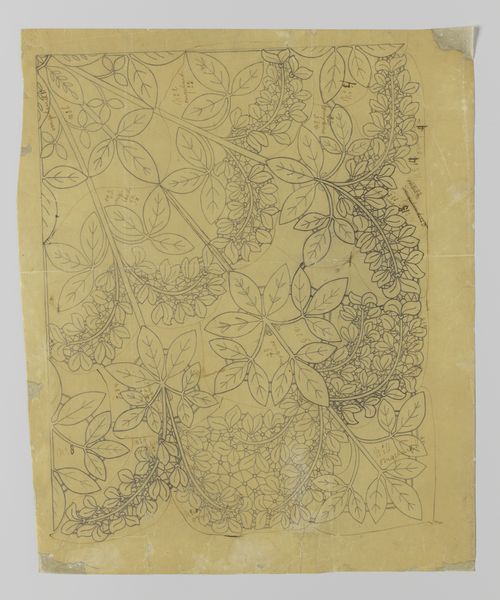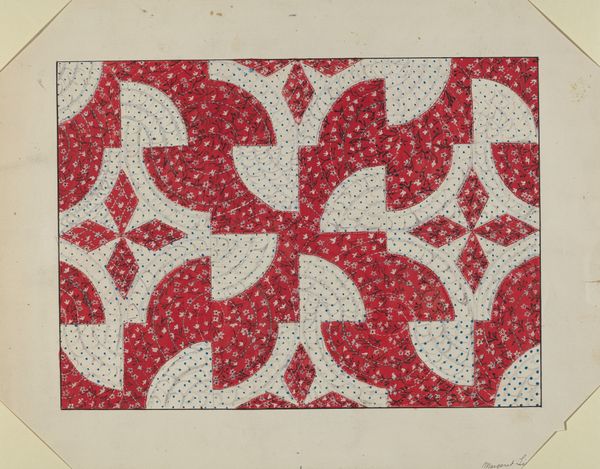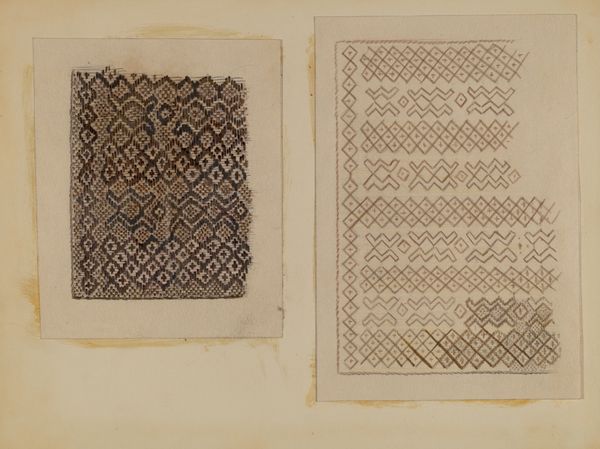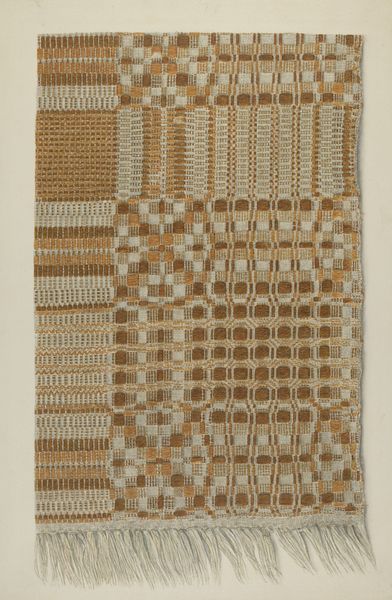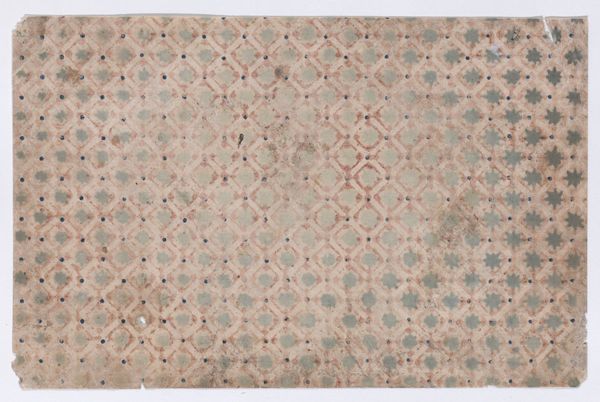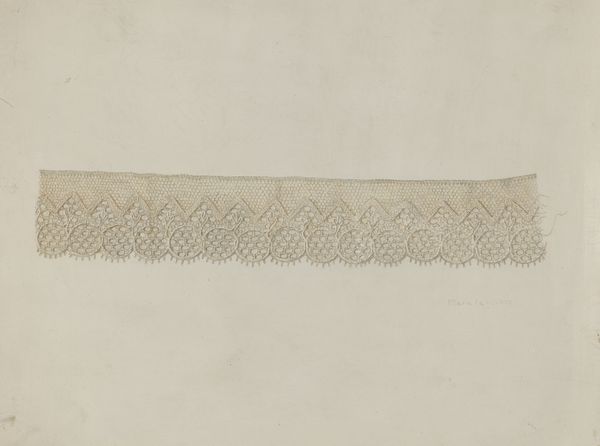
drawing, paper, watercolor
#
drawing
#
water colours
#
paper
#
form
#
watercolor
#
geometric
#
line
#
watercolor
Dimensions: overall: 36.5 x 56.6 cm (14 3/8 x 22 5/16 in.) Original IAD Object: 10 1/2" wide; 18 3/4" long
Copyright: National Gallery of Art: CC0 1.0
Curator: Before us is a watercolor drawing titled "Embroidery," created around 1937 by Henry Rasmusen. Editor: My first thought is delicacy; it has a really fragile quality. Almost like looking at a ghost of lace, with all these soft geometric repetitions. Curator: The title offers a really clear lens. Rasmusen has meticulously depicted what appears to be a section of embroidered textile, maybe even lace, with astonishing accuracy, using watercolour on paper. It really speaks to the meticulous labor involved in crafting such intricate objects. Editor: Absolutely. You see the ghost of the artist's hand attempting to perfectly mimic what could easily be considered 'women's work.' And it feels charged. How were these kinds of crafts and their makers seen then, or even now? Is there a class element here, as well? Curator: Potentially, the act of reproducing embroidery through painting elevates the craft, bringing the techniques and labor associated with the domestic into the realm of high art. It asks us to consider consumption habits too. Is this documentation a critique of fast fashion, a yearning for the slow art of handcrafted materials? Editor: Good points! I think also it's worth noting that museums, art markets and educational establishments would rarely focus on works like embroidery, therefore Rasmusen is questioning these boundaries. The formal arrangements mimic art, but the means and cultural worth were worlds apart. Curator: It almost operates like visual preservation, making sure these items—and what they stand for, the stories they could tell of home and community and local history—aren't totally lost or forgotten. Editor: Yes, that’s very true. This quiet work really invites us to reconsider the hierarchy we often apply to art forms and practices, the stories of value it carries forward and why. Curator: Indeed, and perhaps it prompts us to seek out the quiet acts of creativity and dedication that shape the textures of our everyday lives. Editor: And acknowledge those historical divisions between artistic expression and the everyday skilled labor.
Comments
No comments
Be the first to comment and join the conversation on the ultimate creative platform.
